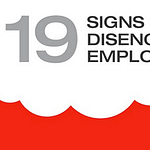No two people are ever alike, which is why it’s natural for differences in opinion can lead to conflicts between people. It can begin with a simple disagreement that can grow into an argument and evolve into conflict. Although this is expected, conflicts should never be left unaddressed.
In the workplace, you have to remember that everyone is important no matter the differences in pay grade or titles. Therefore, conflict management at work involves being able to proactively address and stem such situations from spiraling out of control.
Main Causes of Conflict
Although conflicts at work can be identified while it’s happening, it might be better to spot them early ahead in order for them to become less destructive. In order to do so, you need to be able to pay attention to what can cause them.
Below are seven causes of conflict situations, and ways to effectively manage them in the workplace:
Poor Communication
A great team understands that productivity is achievable when relationships among members are healthy. And since a team thrives on relationships, communication is important across all members.
In the workplace setting, it is easy to assume that those who are already working there are great communicators because this is a skill mostly required by a company during the hiring process itself. However, it is actually seldom applied within the office.
More often than not, communication skills practised among each other at work are overlooked. Conflict may arise when there is a lack of communication as this may not make clear any expectation, instruction, or assignment.
Solution
To address this and avoid misunderstanding at the onset, people should be allowed to approach each other for clarification. If everyone feels that they can openly talk to each other about work matters, you’ll be able to build the team better.
Some discussion points you can bring up and develop as a regular routine to check up on the team may include the following topic points or questions:
- “I know the instructions might be clear to me but is there any way that I can further clarify it for you?”
- “Which parts of the task might be challenging to do and is there any way that I or any member of the team can do to make it more bearable?”
- “I’m open to other ideas as well to address this concern. Does anyone want to pitch a different approach today?”
- “What help can I extend to make this team task doable with the given members and deadline?”
Part of communicating is also delivered through non-verbal cues. Be more aware of your own and put the effort into understanding theirs.
Unclear Roles & Responsibilities
Similar to poorly given instructions, unclear expectations of each member’s roles and responsibilities can turn confusion into conflict. As unclear roles can increase stress levels within employees, the risk of a conflict breaking out increases significantly and is inevitable. This can lead to demotivation, killing productivity and work performance.
Solution
To prevent this, you can review the current organisational structure’s written responsibilities and also clarify how this is explained to every employee who transitions into a different role. If there are manuals for training per assigned role, then you have to see how this is assessed.
Job descriptions enable you to all have healthy boundaries so that no one feels they’ve been overstepped. Review and follow-through that people are clearly given these boundaries so that no one is overworked or overstepped.
Clash of Personalities
If in life not everyone can be our friend, this is also true of the workplace. However, this doesn’t mean that we won’t address this conflict borne out of human differences. That’s a really challenging issue to deal with, as you have various characteristics and personalities in one place physically or working in the same team albeit remotely.
Solution
The solution to this is to engrain that respect must always be given towards each other. This, however, can only be learned through good examples.
If you’re in a higher position, this means that you have to be the first to apply this. You have to know your own strengths and weaknesses, as this will help you to recognise that colleagues you might not always agree with are still as important as you are in the company.
You may use the following reflective points as examples when mediating between two employees or managing one yourself:
- In terms of the work, what specific matters happened?
- Which part of the disagreement has affected the work?
- Is there any way that the work can still be efficiently done by the same people?
- Would the parties wish to be given a different task or role instead?
Most importantly, you should also be open to how the employees see the best way to resolve such conflict.
Scarcity of Resources
When there aren’t enough resources in a company to do the job properly, competition happens. Though constructive competition is welcome, if left unchecked, a competitive spirit can give rise to chaos and resentment.
Solution
One of the most practical resolutions to address this conflict is to manage your financial health. This includes but is not limited to:
- Setting financial goals
- Working on a budget
- Tracking expenses and financial reports along the way
- Looking into financial support
- Close monitoring progress
- Repairing possible credit points
- Working on investments
By doing so, you can manage your company’s resources better and ensure that no one gets underpaid.
Additionally, you can also review the workload given to people. If they are being asked to do too much and give too much of their time, they are setting themselves up to fail or worse, the competitive spirit can become resentful.
Resistance Towards Change
Oftentimes, when a routine has been established, it becomes challenging for us to adapt to changes, especially when they take us out of our comfort zones.
When changes happen within the company that is inevitable because they have been found to be more beneficial to everyone than before, it is the job of those who are leading the company to make everyone feel this need for change.
Solution
In order to help people understand the need for change, you may go over the following points that you can discuss with them:
- Which aspects of the change make it hard to adjust?
- How is this change going to be good for you? For the team? For the rest of the company?
- What can I do to make the adjustments much easier and bearable?
It can also greatly help if you can let them voice out their suggestions on how they can better adapt to the changes put up. Work with them in their struggle and they’ll soon see why you agreed for the changes to happen.
Insufficient Training
The irony about common sense is that it isn’t as common as we’d like it to be. You have to remember this because there are skills and principles that we might expect people to already have but that they actually don’t.
Training should include skills that should have been equipped before allowing people to take on roles and responsibilities. However, training becomes better if you also look into reviewing what you think is common sense in the workplace.
This can include openness towards supervision, respect towards each other, a stand against bullying and harassment, setting aside biases and being non-discriminatory and considerate to people from backgrounds not similar to yours, and understanding the needs and functions of all workplace policies among others.
Solution
Here are some things you can do to address this concern:
- Evaluate the efficiency of the current training (both from trainers and trainees)
- Conduct separate training focused on personality or character development
- Offer refresher courses in terms of basic soft skills
- Research into creative training exercises that can be applied on a daily basis and with little supervision
Toxic Culture and Values
Toxic work environment is the biggest factor for breeding conflict. When people do not feel that work is healthy for them, this hinders them from productivity.
A company may have its vision and mission in place but its culture and values should also be made clear and healthy. Leaders within the company need to understand what ethical workload is and the strong emphasis on respecting all kinds of people.
You can’t make everyone at work love their job but you can do simple things that go a long way to make them feel that they are welcome, respected, and valuable as individuals and to the organisation.
Solution
To mitigate this concern, you can take the following actions:
- Clearly state the values that the company upholds
- Encourage feedback from those under you on how you have upheld the same values
- Positively reinforce everyone when values are being followed through
- Be aware about those who struggle with the work environment and check-in with them to hear their concerns and also to propose how the work environment can be healthier for them
Ensuring that everyone has a healthy working environment will inevitably lead to productivity. Thus, be able to practice the values that you expect them to have so that they can see where it will lead them personally and professionally.
Manage Work, Respect People
Identifying conflicts is never enough to address them. You have to be able to proactively manage them at the onset and quickly. Follow through and be more sensitive and respectful towards your own and your co-workers’ disposition at work, so that everyone understands that you’re all one team.
At the end of the day, when conflicts are resolved and workload is better managed, everyone can harmoniously work together to succeed.
Author: George Relish – Editorial Director at Quidable
Photo credit: Jean Wimmerlin on Unsplash




